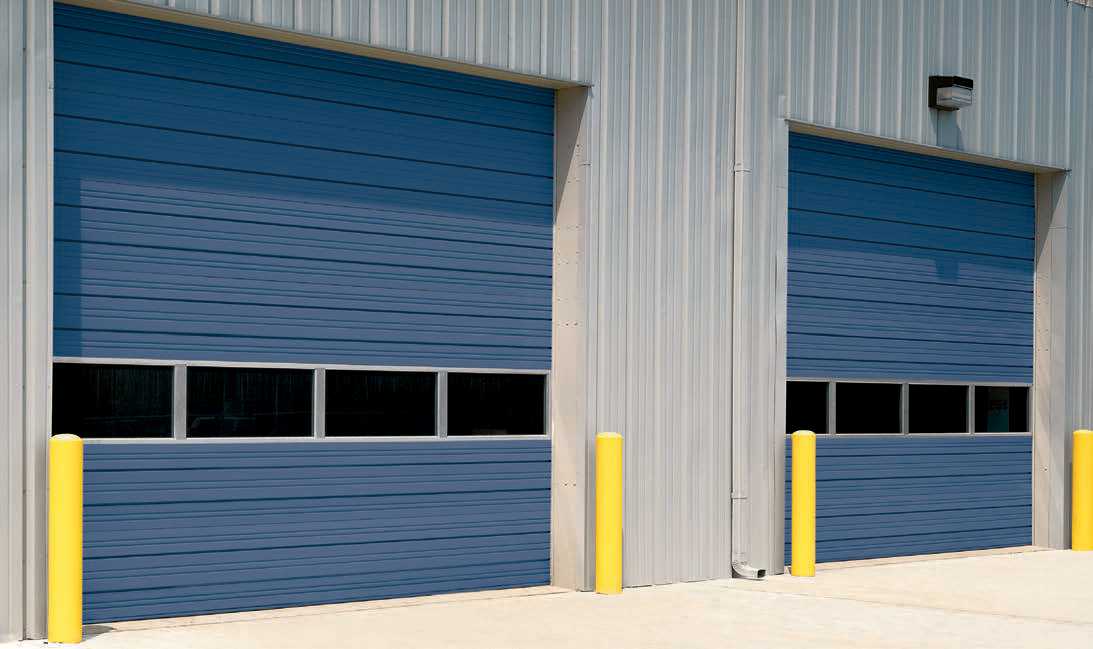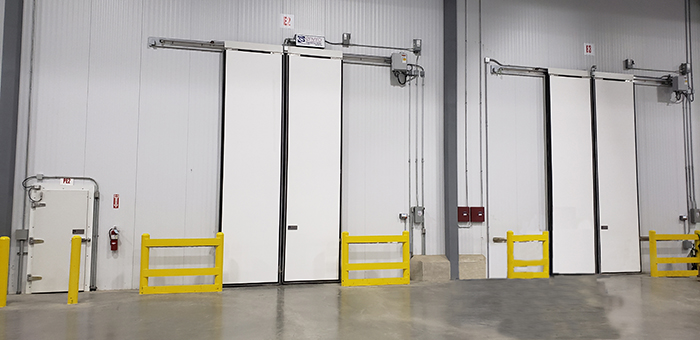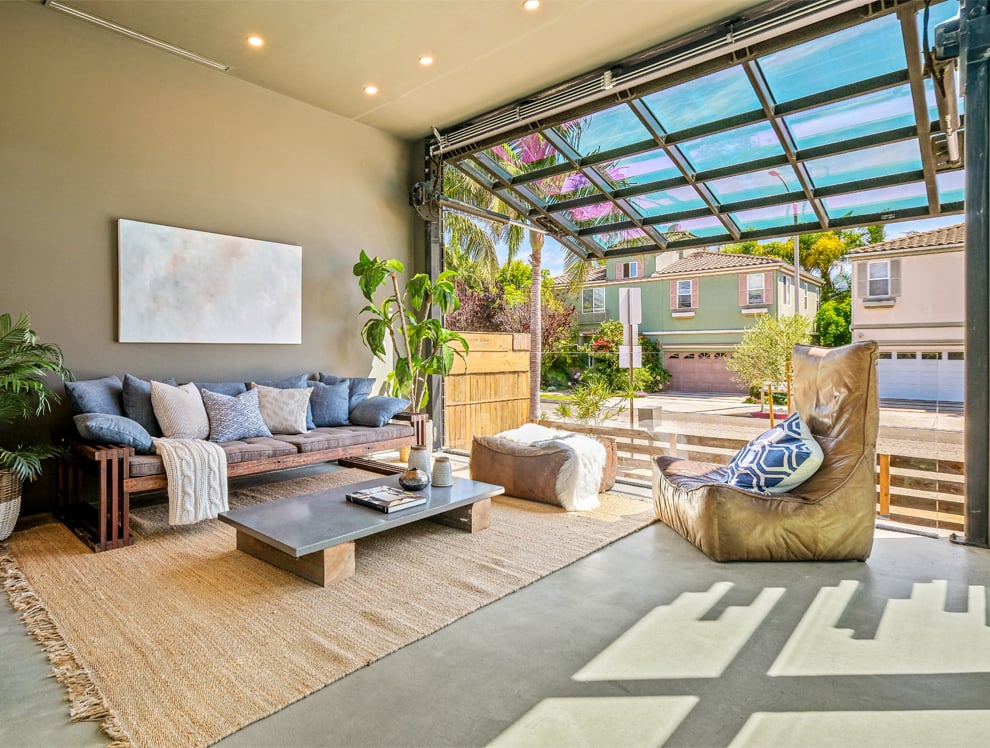Understanding Commercial Sectional Door Types
You probably don't think much about commercial sectional doors until something goes wrong. But these workhorses are quietly keeping your business running, protecting your inventory, maintaining the right temperature, and creating that crucial first impression when customers walk through your doors. If you're managing a bustling warehouse or a sleek car dealership, the door you choose affects your daily operations and long-term costs. From material selection to maintenance, let's walk through everything you need to know about picking the right door—all with insights from industry experts and real-world applications.
Steel Doors: The Industrial Powerhouse
Midwest manufacturing plants often rely on steel sectional doors for their 16-gauge panels and dent-resistant designs. I recently visited a refrigerated distribution center outside Chicago using insulated steel doors with R-16 polyurethane cores. Their energy bills dropped 22% compared to older non-insulated models 1.

Aluminum Glass Doors: Where Style Meets Function
For businesses like upscale dealerships, aluminum-framed glass doors provide natural light without sacrificing security. A Toyota showroom in Dayton upgraded to tempered glass panels last year, enhancing customer experience while maintaining 500-pound load capacities 23.

Space-Saving Vertical Lift Systems
Fire stations and aircraft hangars frequently adopt vertical-lift models. These doors stack panels vertically instead of horizontally, crucial for buildings with limited ceiling space. The Franklin County Fire Department, for example, credits their 14-foot vertical door with reducing emergency vehicle dispatch times by 18 seconds.

Breaking Down Commercial Sectional Door Prices
2025's steel tariffs (25%) and aluminum tariffs (10%) have changed pricing on sectional doors. Here are some of the current cost drivers:
Material Costs
Steel: $300-$2,500+
Basic 9x7-foot non-insulated doors start at $300, while insulated models with rust-proof tracks reach $2,500 45.Aluminum: $800-$2,500
Lightweight but less impact-resistant, ideal for coastal regions 37.
Size and Customization
A 16x8-foot warehouse door now costs 35% more than pre-tariff prices due to reinforced tracks and heavy-duty springs 89.

Durability Upgrades
Galvanized hardware adds 20% to initial costs but extends lifespan by 7-10 years in harsh environments. The Port of Cleveland saw 62% fewer repairs after switching to corrosion-resistant models 1011.

Choosing Your Ideal Commercial Door
Selecting doors is all about finding the best fit for your needs. To do so, prioritize these factors:
Climate Control and Energy Efficiency
Insulated doors with R-12+ ratings (insulation ratings measuring thermal resistance) prove essential for climate-sensitive operations. A Kansas cold-storage facility reduced HVAC costs by 30% using R-18 doors 113.

Security and Safety Standards
Steel doors with tamper-proof locks meet NFPA 80 fire safety standards, while motion sensors prevent accidents in high-traffic docks 1415.

Operational Demands
Chain-drive openers (rated for 50,000+ cycles) outlast belt drives in heavy-use settings. The Amazon hub in Louisville processes 2,300 daily door cycles using industrial-grade systems 16.
Aesthetic Alignment
While aluminum suits storefronts, avoid thin gauges in industrial zones. A Milwaukee parts supplier learned this the hard way as their decorative aluminum door required $4,200 in dent repairs after six months 172.
Installation and Maintenance Protocols
Heavy-Duty Commercial Door Installation
Professional installers follow a precise 6-step process:
- Reinforce door openings with steel framing
- Align vertical tracks within 1/8" tolerance
- Mount horizontal tracks with rust-proof brackets
- Install panels bottom-to-top using heavy-duty hinges
- Calibrate torsion springs (counterbalance mechanisms) to exact weight specifications
- Test safety sensors and emergency release systems 19
Misaligned tracks cause 73% of operational issues post-installation. Always verify level placements before signing off 2021.
Extending Door Lifespan
- Monthly: Check rollers, hinges, and cables
- Quarterly: Lubricate with silicone spray (grease attracts dirt)
- Annually: Test spring tension and weather seals 22
Neglect has consequences. After ignoring maintenance, a St. Louis warehouse faced $8,400 in spring/cable replacements after three years 1016.
Troubleshooting Common Issues
Door Won't Open
Likely Culprits:
- Broken torsion springs (replace in pairs)
- Misaligned tracks (realign with laser levels)
- Frozen components in sub-zero temps (apply cold-weather lubricant) 1626
Excessive Noise
Solutions:
- Replace worn nylon rollers ($15-$40 each)
- Tighten loose hinge bolts
- Install vibration-dampening track pads 27
Remote Failures
Update Wi-Fi openers' firmware annually and keep photo-eyes clean. A Denver auto shop eliminated 90% of remote issues by switching to hardwired keypads.
Compliance and Material Trade-offs
Meeting Industry Standards
All commercial doors must comply with:
Material Comparison
- Steel: High strength but shows dents
- Aluminum: Corrosion-resistant but less durable
- Composite: Low maintenance but inferior insulation 331
Key Takeaways
- Insulated steel doors deliver the best value for most industrial applications
- Professional installation prevents 80% of common mechanical issues
- Monthly maintenance checks reduce repair costs by 45% on average
- Always verify compliance with NFPA 80 and UL 325 standards
With material costs continuously fluctuating, partnering with certified installers can save you from headaches with tariff costs and technical requirements. When you have the right door, you won’t even notice it. It’ll just do its job, for years and years, until it's time to upgrade.
